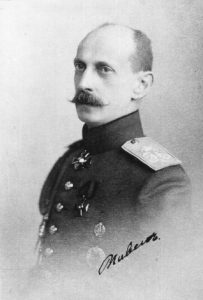
As you have probably read in the history of Russia, this very old country started off as a kingdom and has always been getting the rules done like an empire. Russia has a long list of rulers before the current political arrangement was started to be applied. Some of these previous rulers were Grand Dukes. The Grand Duke is the title of ruler in a number of states, ranked lower than the king (emperor, Kaiser) and king, but higher than the prince. Here are 3 other things you should know about the Russian Grand Dukes.
1. Not all of the Grand Dukes were Russian rulers
The phrase “Grand Duke” has been found in Russian narrative sources since the 11th century, but at this stage it was given to the members of the Russian Imperial Family and not necessarily people who held some level of power. The title Grand Duke then held more meaning in the second half of the 12th century because it was associated with the political realities of the collapse of the Old Russian state. The reigning monarchs in the history of Russia include the title Prince of Novgorod, Grand Duke of Kiev, Grand Duke of Vladimir, Grand Duke of Moscow, Tsar of All Rus’, and Emperor of All Russia.
2. Grand Dukes in the Russian Empire
Since 1721, by the decision of Peter I (the last tsar of all Russia and the first All-Russian Emperor), the Russian monarchs began to be called Emperors , but the title Grand Duke continued to be used in the full title of the monarch when transferring the lands under his authority.
In the era of absolutism, the titles Grand Duke and Grand Duchess began to be given to the children of the reigning monarch, which was officially enshrined in the Institution of the Imperial Family of Paul I on April 5, 1797. The title of Grand Duke gave the holder a formal right to be in line for the throne of the Russian Empire. By the decision of the emperor, the Grand Duke could be deprived of the title if the circumstances of his birth or life were in conflict with the articles of the Institution, which determined the requirements for persons suitable for the occupation of the throne. The title of Grand Duke, Grand Duchess and Imperial Highness belong to sons, daughters, brothers, sisters, and the male generation and all the grandchildren of the emperor.
3. Some memorable Russian Grand Dukes
If we should make a list of all the Grand Dukes from Russia, then it’s going to be a very long list. Leave alone drawing down the family tree. But, there are several Grand Dukes that left deeper footprints than the others because of what they had left in the history.
Grand Duke Paul Alexandrovich – He was born in 1860 as the youngest child of Alexander II, the Emperor of All Russia and Empress Maria Feodorovna. His brother, Grand Duke Sergei Alexandrovich, and father were assassinated in 1905 and 1881 respectively. In 1889, he married Princess Alexandra of Greece and was blessed with two children; Grand Duchess Maria Pavlovna and Grand Duke Dmitri Pavlovich. Sadly, his wife died six days after giving birth to their son prematurely in 1891. Later in 1961, Grand Duke Dmitri Pavlovich became one of the conspirators in the assassination of Grigori Rasputin.
In 1902, Paul married Olga Valerianovna Karnovich without the permission of Nicholas II and resulted in his banishment from Russia and all his properties were seized. His brother was appointed the guardian of Paul’s two children from his first marriage. In the end, though, Nicholas II allowed Paul to return to Russia and granted Olga the title Princess Paley.
Grand Duke Nicholas Mikhailovich – He was born in 1859 as the eldest child of Grand Duke Michael Nikolaevich of Russia (a son of Nicholas I, Emperor of All Russia) and Grand Duchess Olga Feodorovna. His three brothers were killed by the Bolsheviks. He never married as his two women he ever fell in love with couldn’t be married to him because of blood relation and difference of belief. So Nicholas decided to pursue the other thing he loved which was Russian history. He wrote many historical books, was the chairman of the Russian Historical Society and awarded an honorary doctorate in Russian history by Moscow University in 1915.
Grand Duke George Mikhailovich – Just like the other two Grand Dukes above, George also had an interesting personal life because his wife, Grand Duchess Maria and their two daughters Princess Nina Georgievna and Princess Xenia Georgievna left Russia when the World War I broke out to live in England and never returned to Russia. George never saw them again. He stayed in Russia to serve as a General in the Russian Army and became the curator of the Alexander III Museum – today known as the Russian Museum in St. Petersburg.
Grand Duke Dmitri Konstantinovich – He was born in 1860 as the fifth child of Grand Duke Konstantin Nikolayevich of Russia (a son of Nicholas I, Emperor of All Russia) and Grand Duchess Alexandra Iosifovna. His family was not happy because of internal issues. Dmitri decided to be a bachelor his whole life and served the Russian army. He never took any part in the politics but very passionate about horses that he became the president of the Imperial Society of Horse Racing.
These four Grand Dukes were executed on January 28, 1919 at the courtyard of the Fortress of Peter and Paul in St. Petersburg by a firing squad as a result of the Russian Revolution.
What do you think of the 3 things you should know about the Russian Grand Dukes? They surely had interesting personal lives that are worth to read into just as much as their roles in Russia.
